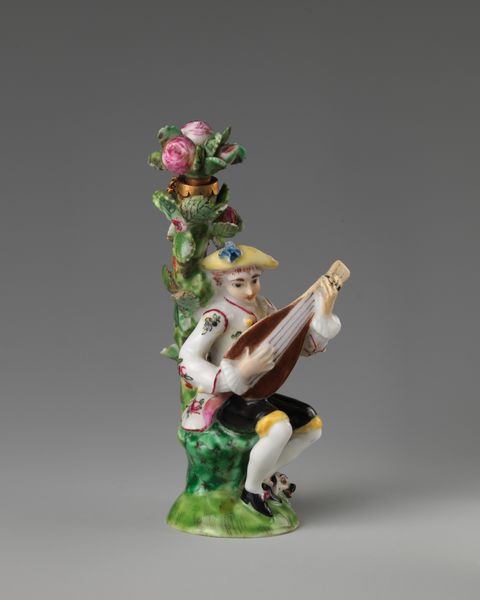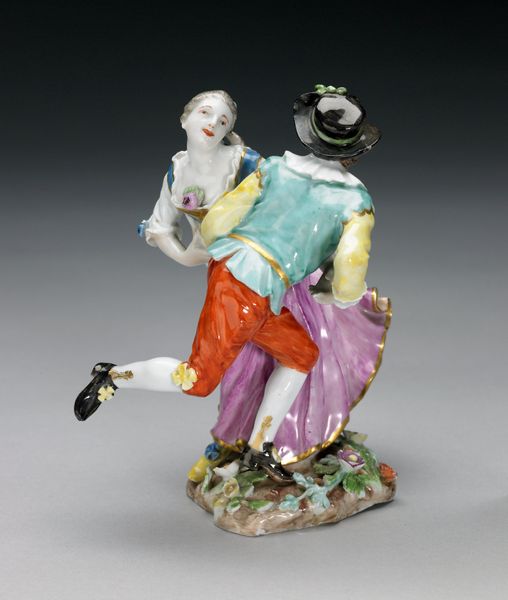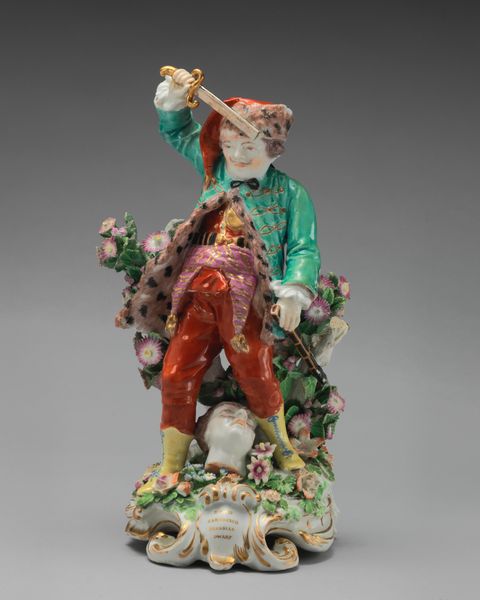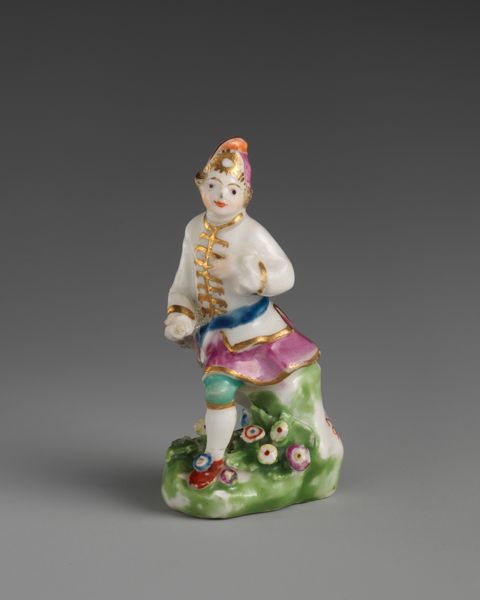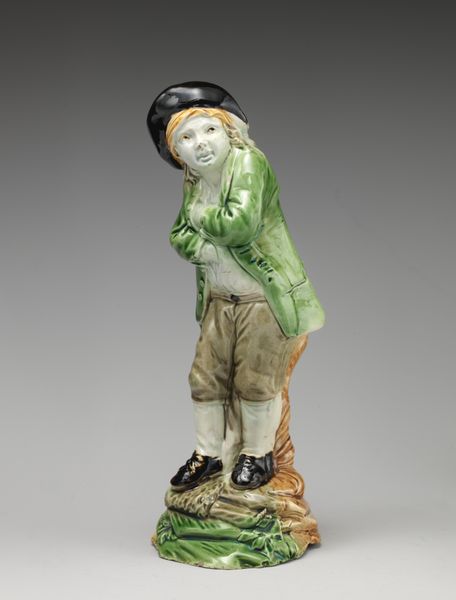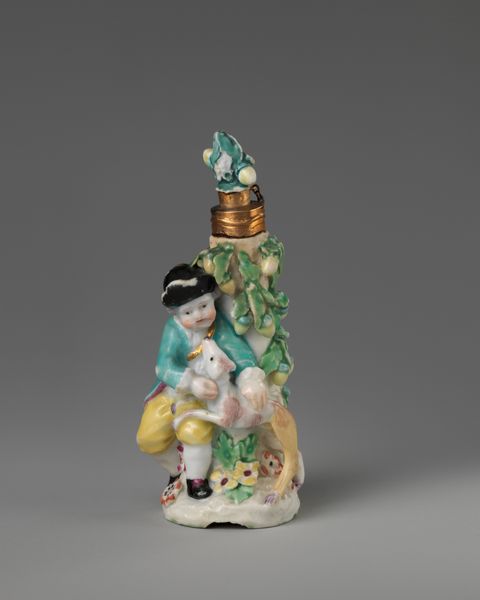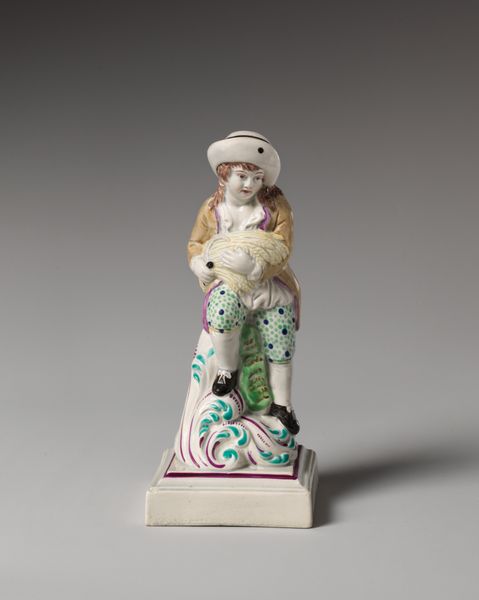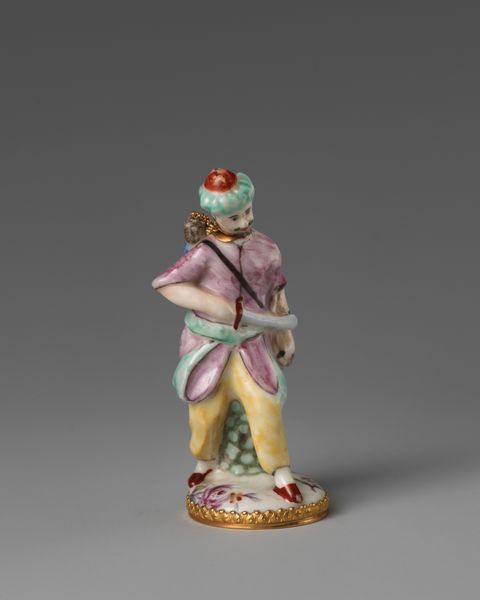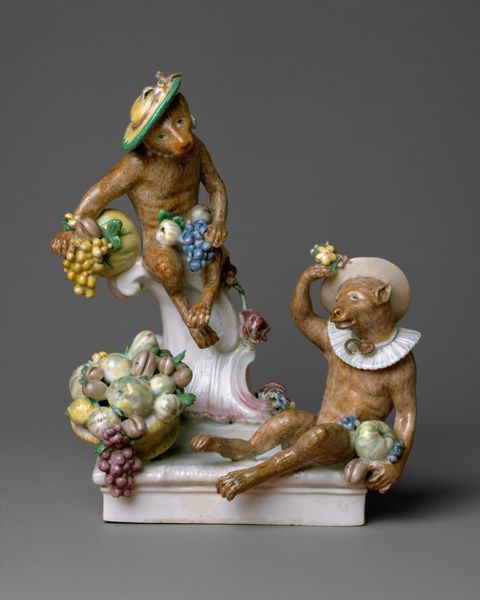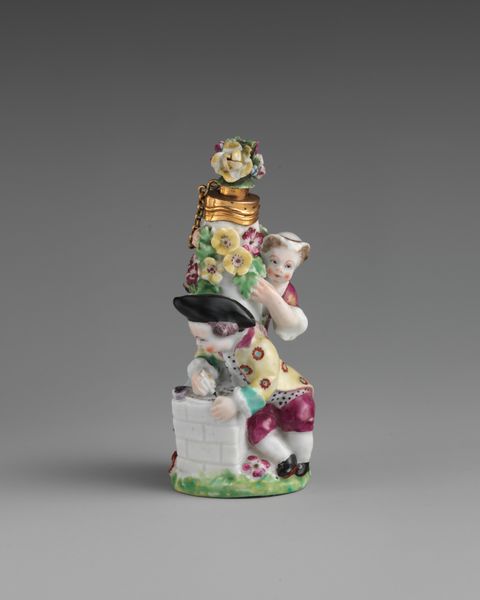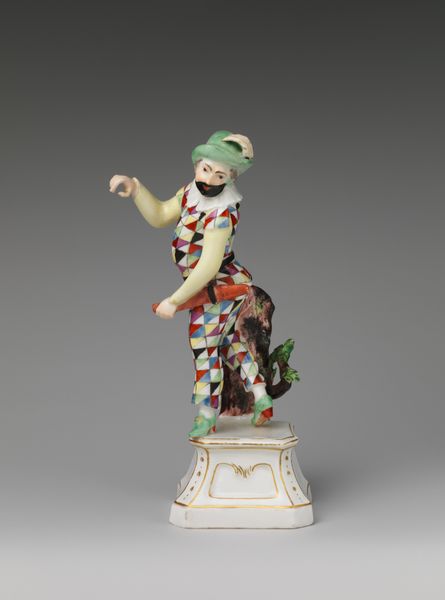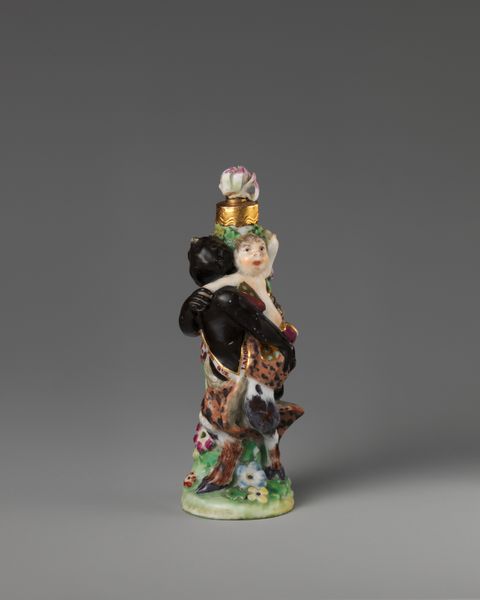
ceramic, porcelain, sculpture
#
portrait
#
ceramic
#
porcelain
#
figuration
#
sculpture
#
decorative-art
#
rococo
Dimensions: 5 3/4 × 4 1/2 in. (14.6 × 11.4 cm)
Copyright: Public Domain
Curator: Ah, "Fiddler," a delightful porcelain sculpture originating from the Chelsea Porcelain Manufactory, sometime between 1750 and 1760. Editor: It's rather charming! A musician casually perched upon a faux-rock, complete with a bit of tipple beside him, mid-performance. It speaks of ease and leisure, a fleeting moment captured in fragile porcelain. Curator: Precisely. Chelsea porcelain during that period was often associated with luxury and the patronage of the aristocracy. Decorative pieces such as "Fiddler" mirrored the leisurely pursuits idealized by the elite, often romanticizing rural life. Think of the Trianon at Versailles, an artificial rusticity created for the pleasure of the court. Editor: I'm curious about this idealization. We must remember, such pastoral imagery often obscures the realities of peasant life, creating a romanticized view devoid of the harsh conditions many faced. This fiddler, seemingly free of worry, serves as a form of social escapism. The bright clothing certainly stands in contrast to work clothes of the lower classes. Curator: Absolutely, this era also saw a rise in interest of collecting. Sculpture such as this became status symbols. Their existence reinforces social stratification through conspicuous display. Editor: And that brings up questions about access and visibility. Who had the privilege of seeing, owning, and enjoying such representations? What stories were actively being silenced or ignored in favor of such pastoral fantasies? Was there a black fiddler also sculpted, do you think? Curator: Doubtful. These porcelain figures are products of a particular social climate, where some people and their culture have worth while others are seen as servants. The placement of these porcelains, not on display in common locations, but carefully staged inside upper class parlors, says it all. Editor: Thinking critically about pieces like "Fiddler," means examining these power dynamics. We’re compelled to engage with a broader discussion about visibility, representation, and social narratives in the history of art and object production. Curator: It is always important to critically look at these objects. Thank you for that perspective, its what objects like these desperately need. Editor: Thanks, on the one hand I appreciate the whimsy, but its important not to erase history while doing so.
Comments
No comments
Be the first to comment and join the conversation on the ultimate creative platform.
